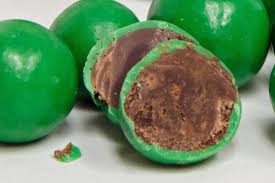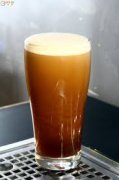Learn first-hand about the coffee making process and various Hawaiian delicacies at Greenwell Farm in Kona Coffee area.

Greenwell Farm Coffee Cherry
I am now at Greenwell Farm in the famous Kona Coffee area of Hawaii, enjoying free travel and tasting. Greenwell is one of the oldest and largest coffee producers in Kona, providing sustainable and pure products for hand-picked coffee beans. Despite the leisurely atmosphere of Oshima, it is one of the most pleasant caffeine producers in the world.
They do this to make sure their coffee is 100% Kona, and their reputation has never disappeared from the rotten beans left on the grocery store shelves.
It all began in 1850, when the English name was Henry Greenwell. After being injured in the California gold rush, he moved to Hawaii to rest and relax. This is the agribusiness in which he and his wife Elizabeth began to win an "accredited diploma" at the World Exposition in Vienna in 1873. After experimenting with growing coffee beans in different places around the island, he found that the volcanic soil of Kona was influenced by the beautiful Monroya and Monakae volcanoes, changing the flavor of coffee beans. This is also due to the fact that the weather tends to rain in January and February, leading to a white blossom, known as "Kona snow", which eventually becomes a coffee cherry and ripens about seven months later.

Free coffee at Greenwell Farm
Today, the family business has entered its fourth (or fifth) generation, covering more than 70 acres (25 hectares) and working with more than 300 local farmers. They are located in the center of the Kona coffee belt, 800 to 3000 feet (244m to 914m) above sea level. On site, they have their own pulping and drying facilities, dry mills, bean grading facilities and storage facilities.
Kona's harvest season runs from September to March, with up to five rounds of harvest in each field, and pickers can fill 100 pounds (45 kilograms) of burlap bags of coffee cherries. On average, pickers can pick 25 pounds (11 kilograms) of coffee cherries in an eight-hour shift, but some very fast workers can handle 40 pounds (18 kilograms). It's hard work, but it's rewarding.
The experience starts free of charge outside the store-anyone can bring a drink anytime from 8:30 to 4:30-with a smooth medium bake, ending with a seasonal autumn harvest and notes on pumpkins and spices.

Greenwell Farm also offers free taste of honey from the local Big Island Bee.
There is also a lot of satisfying coffee I can taste, and a table for samples of organic honey from local Big Island bees. Once I had my stuffing, Peggy took me to the farm, where I greeted me with avocados, papayas, bananas, cocoa, lychees, macadamia nuts and, of course, countless rows of coffee cherries.

Coffee beans in coffee cherries at Greenwell Farm
"We grow a lot of fruit, but although everyone thinks we grow cherries, we don't. These are actually coffee fruits, "Peggy said, opening a ruby red fruit that indicates that the bean is ready to be picked.
I tasted the juicy and sweet skin. Because Greenwell Farm doesn't like to waste, they use these skins-which have eight times as many blueberry antioxidants-to create ultra-healthy juices and powders. In addition, after hand-picking beans, they were soaked for 10 hours. The remaining sugar water is donated to local farmers to raise grass-fed beef.
The process continues, with beans dried in the sun every 30 minutes until the sun goes down. After that, they are stored for 45 days to remove any remaining grass smell.
"every coffee bean has a glimmer of hope," Peggy said as we walked to the dry mill. "Unfortunately, the coffee bean is acidic, so it has been worn out here. These layers are called parchment and are then used to cover the garden. "

Coffee beans of different sizes at Greenwell Farm
Then she picked up a handful of beans of different sizes and told me that the bigger the beans, the better the coffee. Because of this, there is a grading system: extra fancy, fancy, No.1, Prime Minister (which doesn't think Coke Coffee, but Hawaiian Coffee), and a rare Peaberry. This is a more fruity, more acidic coffee, due to difficulties need to find more expensive coffee.
In my study, I also learned how to bake. As coffee beans are roasted many times, they become darker, smoother and less acidic. No matter how black the coffee is, it will maintain the same caffeine level.
Interestingly, coffee came to Kona in 1828 and imported trees from Brazil and Guatemala. However, it can be thought that the reason for Kona Coffee and Hawaiian Coffee is that, like wine, coffee beans have local soil, and the soil changes the flavor of beans. I further persuaded coffee to be similar to wine, and when I learned from Greenwell to make a private reserve property of 100% Coke coffee, I carefully selected the best flavor at the right time.

Coffee beans basking in the sun at Greenwell Farm. Photo courtesy of Greenwell Farm.
"remember to tell your friends to visit us and bring a drink!" Peggy smiled and said, as we were nearing the end. "We offer free coffee every day except Thanksgiving, Christmas and New year's Day."
At Greenwell Farm, you know you always get 100% Kona coffee. No matter where you get Hawaiian Kona coffee, be sure to read the label to see if it is 100% Kona coffee, as if it is less you can get an acidic coffee with something good, which means the taste will be adversely affected.

Guittard Chocolatebased interior specializes in Hawaiian chocolates-local legends like "Crusty Balls" (dark chocolate with milk or toffee); "blue ball" (black and white chocolate, blue); "thorn ball" (dark chocolate and white chocolate from pineapple); and "dirty ball" (milk or dark chocolate rolled with cocoa powder), etc. Most importantly, they provided a large number of free samples.
Important Notice :
前街咖啡 FrontStreet Coffee has moved to new addredd:
FrontStreet Coffee Address: 315,Donghua East Road,GuangZhou
Tel:020 38364473
- Prev

Common important regions of Guatemala Detailed description Learn about the fine regions of Guatemala
The Akatango Valley rises to 2000 meters (6500 feet) above sea level, is densely shaded and ecologically unique, and the nearby Fuego volcano is a fault eruption, making its coarse, sandy soil rich in various minerals. Temperate sea breezes from the Pacific Ocean and seasonal climates allow this region's coffee to be sun-dried and processed by home-style traditional methods accumulated over the years. [Features]
- Next

Nitro Cold Brew nitrogen Coffee introduces the taste of beer and manor grade nitrogen coffee
The exchange of professional baristas Please pay attention to the Coffee Workshop (Wechat official account qianjiecoffee) nitrogen Coffee generally originated in the United States, locally known as Nitro Cold Brew, is a new type of coffee sprung up from the coffee town of Portland in recent years. As the name implies, on the basis of cold coffee, nitrogen Nitrogen is injected to make the coffee blend with nitrogen to make it full of fine bubbles and taste.
Related
- Beginners will see the "Coffee pull flower" guide!
- What is the difference between ice blog purified milk and ordinary milk coffee?
- Why is the Philippines the largest producer of crops in Liberia?
- For coffee extraction, should the fine powder be retained?
- How does extracted espresso fill pressed powder? How much strength does it take to press the powder?
- How to make jasmine cold extract coffee? Is the jasmine + latte good?
- Will this little toy really make the coffee taste better? How does Lily Drip affect coffee extraction?
- Will the action of slapping the filter cup also affect coffee extraction?
- What's the difference between powder-to-water ratio and powder-to-liquid ratio?
- What is the Ethiopian local species? What does it have to do with Heirloom native species?

